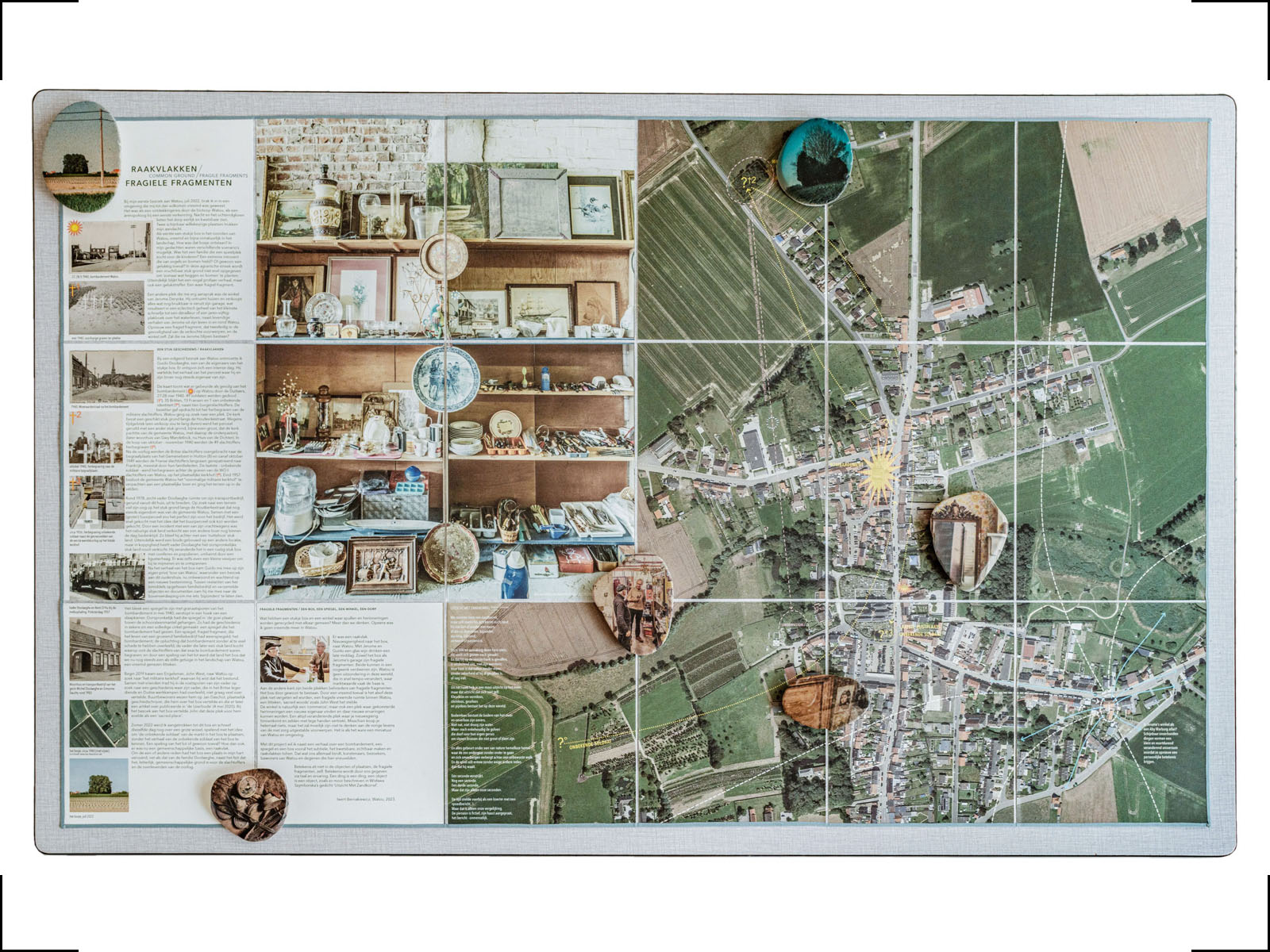COMMON GROUND/ fragile fragments @ Kunstenfestival Watou 2023
In an intensive interaction with Watou, for Iwert Bernakiewicz everything revolves around connection, exchanges and so-called fragile fragments. Initially, as an architect, he inevitably immersed himself in the village’s infrastructure and toyed with the idea of exchanging the cars of the village square for the trees of a grove he discovered just outside Watou. While doing so, however, he thus stumbled upon an unusual episode in Watou’s wartime history.
During the German bombardment of 27 and 28 May 1940, the village was badly damaged and 49 soldiers, one of whom was unknown, and 10 civilians lost their lives. A special cemetery had to be established for the military victims by order of the occupying forces. The ground that served this purpose in the first place was later cleared when the victims were reburied after the war. The unknown soldier was reburied in the cemetery of the local St Bavo church.
The piece of land was eventually leased to a farmer in 1957 and merged into agricultural fields. In 1978, however, it came into the hands of Guido Doolaeghe’s father, who initially wanted to expand his transport business there, but eventually left it unused. Thus arose the grove, the patch of woods which, as a strange element in the middle of the fields, Iwert had noticed early on. In the former family home in which Iwert installed his installation over practically the entire ground floor, Guido Doolaeghe showed him another victim or silent witness of the war bombing. A large mirror, which originally hung above the mantelpiece, had suffered damage to its frame but had always been preserved.
In Jerome Derycke’s second-hand shop, further down the village, Bernakiewicz discovered more fragile fragments. The seemingly unrelated objects, though systematically arranged, reminded him of Aby Warburg’s famous Mnemosyne pictorial atlas in which the latter explored the knock-on effects of classical antiquity in his time. By immersing himself in local history, and getting extensively acquainted with a number of villagers, Bernakiewicz felt he shared some common ground with them. Paying special attention to the fragile elements he encountered - the small patch of woods, the mirror, the objects in the shop - he built an installation in which subtle connections in time and place are created via scale models. With this, he wants to make the invisible visible, that which connects the inhabitants, artists and visitors of Watou - a certain history.
A patch of woods, a second-hand shop, a war. Summer 2022 I encountered Watou and its community a first time during the Patchwork residency. A patch of woods stood out to me, as well as the fragility of this beautiful town buzzing late night with agricultural noises, feet firmly in the ground. Strange encounters, short conversations about a bench and some shoes on the pavement; with a man setting out to cast concrete early morning; or with the farmer, seemingly sleeping close to his fields. A passionate community. (there's always an elephant in the room.)
This project was developed mainly through models. The physical distance to Watou meant I could only visit the village and Guido's childhood home a few times. Thus I started recreating this place in my atelier, models ranging in scale from 1/100 to 1/33, playing with paper, light, space, how to arrange the fragile fragments inside, learning this environment as a scenography of/for life. A big scale model of the kitchen (1/15) provided ample space to experiment with a Warburgian treatment of that room. In the end a boxed final model (1/75) became a gift for the Doolaeghe family.
An A6 sketchbook accompanied me along the whole process. During the course of a year two hundred pages filled with the first encounters within Watou, emerging ideas, nightly thoughts, working drawings, study sketches, measurements, sketches, fold out pages of models and planning as well. As a real cross section of this project it offers a unique insight into thought processes and this project. I selected some personal highlights but feel free to look around in the pdf.
A map in the kitchen, but also in my mind. One could see it as a large scale model as well. Everything started with the idea of swapping 'that particular patch of woods' for the parking lot the market square now is, allowing the statue of the unknown soldier some silence, as well as the Watou villagers some well deserved greenery. Little did I know that this internal map would grow into a story about life: connecting people and places.





